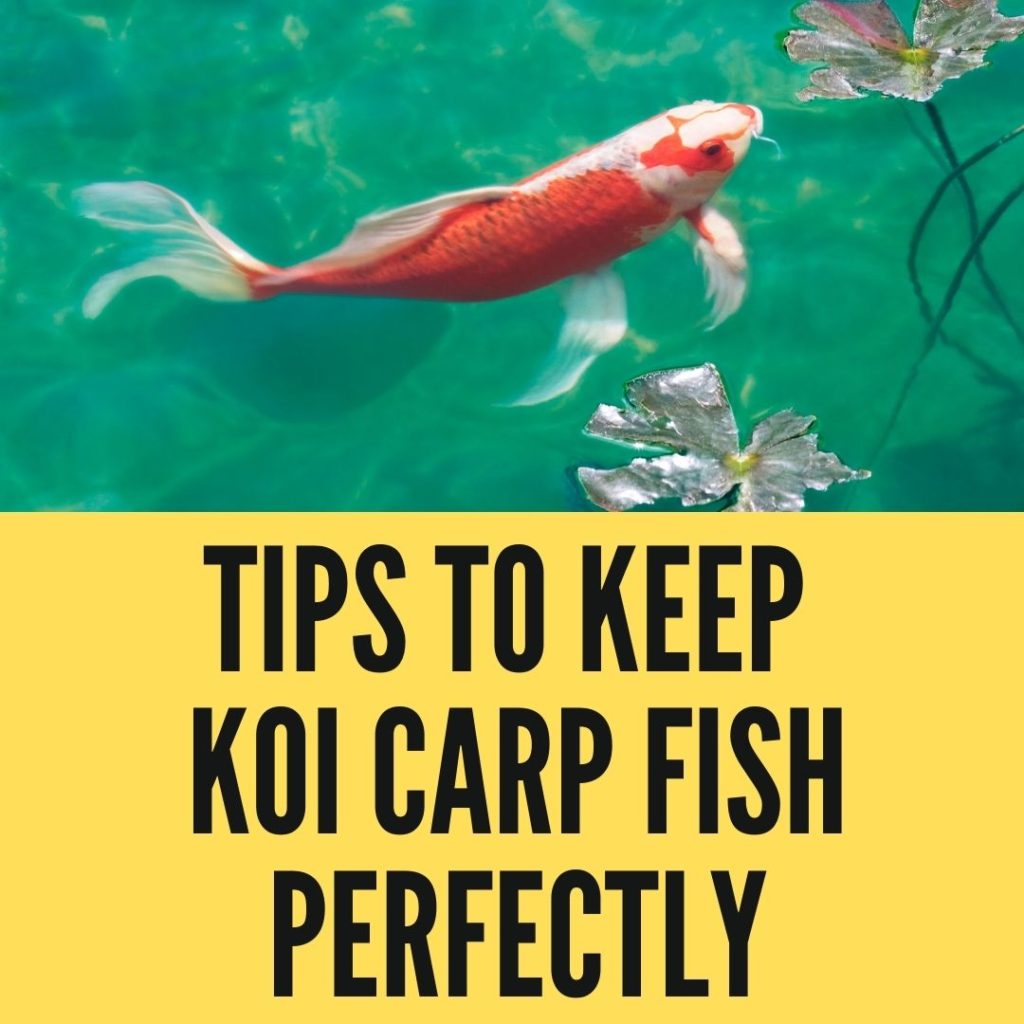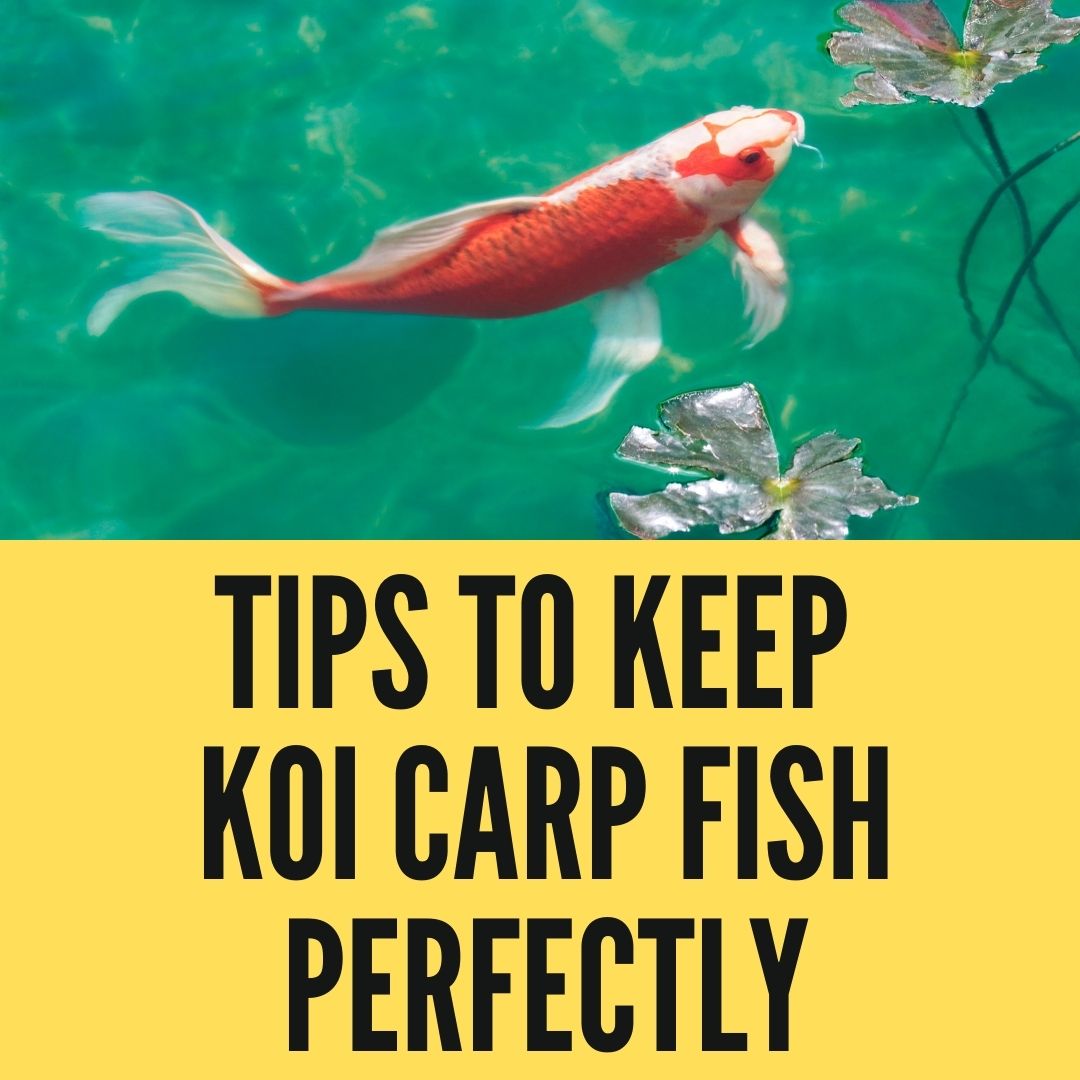Koi carp can grow large quickly, hence you need to keep up with raising them properly to ensure that they survive all developmental phases with ease.
From optimal water temperature, pressure, and cleanliness to proper feeding, there are so many steps you must take regularly to protect your Koi Carp from sicknesses and death. The following tips and ideas will help you in this regard;
Contents
Deal with poor water quality, regularly
Poor water quality can arise in different ways. pH fluctuations may occur due to acid rain.
Excess fish waste may cause high nitrate or ammonia, inadequate pond equipment, and overstocking, which may also cause poor water quality.
Make sure you change up to 50% of the pond water weekly to maintain less than 60ppm of nitrite reading.
Changing up to 50% of water daily can also help you maintain a pH balance of between 7 and 8.5 plus a minimum Oxygen level of 6mg/litre.
Ensure moderate and tolerable temperatures of pond water
Koi Carp may survive winter temperatures to some extent by simply hibernating when the surface water level freezes.
You should place a floating heater or de-icing device on the surface of the pond in extreme winter conditions to create holes in the surface of the ice and create an essential gas exchange.
The body temperature of the Koi Carp may adapt to temperature fluctuations of the surrounding environment only for a period; hence you must keep the temperature regulated.

Look for signs of ill health in Koi Carp
Oftentimes fish in the pond may look healthy until their underlying health problems become too difficult to handle.
You should look for signs of inactivity and lower feed consumption as such may be the first signs of ill health.
In addition to changing the pond’s water regularly to prevent the build-up of toxins, you need to buy a water testing kit and check water quality at least once a week to detect problems early.
Make use of the right filter
The need for the right filter cannot be over-emphasized. There are so many brands and styles of filters out there, you just have to be careful when making your final choice.
Choose the right filter that is recommended for the volume of the pond plus the stocking numbers.
You should also consider the future growth rate of the fish when choosing a filter. One of the main jobs of the filter is to remove solid wastes and other debris from the pond.
With the removal of nitrite and ammonia constantly, the filter will create a clear and healthy pond for your fish to thrive and live healthily.
Don’t Overstock the pond
Remember that Koi Carp grow large quickly, hence putting too many of the species inside the pond can be detrimental to their health.
Overstocking for instance can cause stunted growth and poor feeding.
It can also lead to over-pollution with the fish faecal material which in turn can lead to higher nitrites and ammonia.
Give the right diet
The way you feed your Koi Carp will tell on their health, just like any other pet.
Koi Carps eat a meat and vegetable diet, you should go for a special feed that will promote their health and color.
The top-quality food must include appropriate quantities of Vitamins, Minerals, Carbs, and protein.
Avoid feeding them bread crumbs and goldfish flakes but you can occasionally feed them foods such as peas, chunks of lemon, and lettuce.
In the winter season, you should consider feeding them low-protein wheatgerm feed and then switch to the high protein growth diet in the warm or hot summer season.
Feed them according to the season
The Koi carp digestive system has been found to slow down significantly in the winter when temperatures drop drastically.
The digestive system of the fish is at its lowest during this period, hence giving your Koi carp too much food during this period may lead to wastage and pollution of the pond water.
To cope with the extreme drop in temperature, food tends to stay longer in the gut and that can make them seriously ill.
To avoid excess food leading to the creation of excess nitrate and ammonia in the pond, you should avoid feeding them when food is floating on the surface of the water.
Maintain the right equipment for the Koi Carp
Keeping your Koi carp will depend largely on the type of equipment you use in maintaining their environment.
You should consider the right equipment designed specifically for this species of fish.
Invest in a quality filtration system to ensure that clean water remains in the pond and to eliminate toxins created by nitrites and ammonia from the fish wastes.
Consider choosing a strong water pump, this will circulate water more efficiently through the filter system.
Make use of the original pond skimmer to eliminate pollen, floating leaves, and other kinds of debris.
Make sure the aeration system of the pond is efficient to ensure great oxygen levels and proper aeration.
Install a UV clarifier to prevent or eliminate the green water algae.
Conclusion
Keeping your Koi Carp also means protecting them from predators.
Even in most urban areas, your Koi Carp may become prey to predators like large birds because they are big and have bright colors.
Cats, minks, and herons can also be predatory on your Koi carp. You should place a net on top of the pond’s surface if it is located outdoors.
In addition to protecting your fish from predators, you should also avoid overcrowding the pond with many koi carp numbers.
Keeping too many of these fishes in a small size pond will hamper their growth, and ability to swim around.
Choose 1 to 2 fishes for the smallest pond and increase the number to two as the pond size increases.
One rule you should follow is to use 10 gallons of water per 1 inch of fish.
You should also have a minimum of 1000 gallons of water for a 3ft. depth of the pond.
